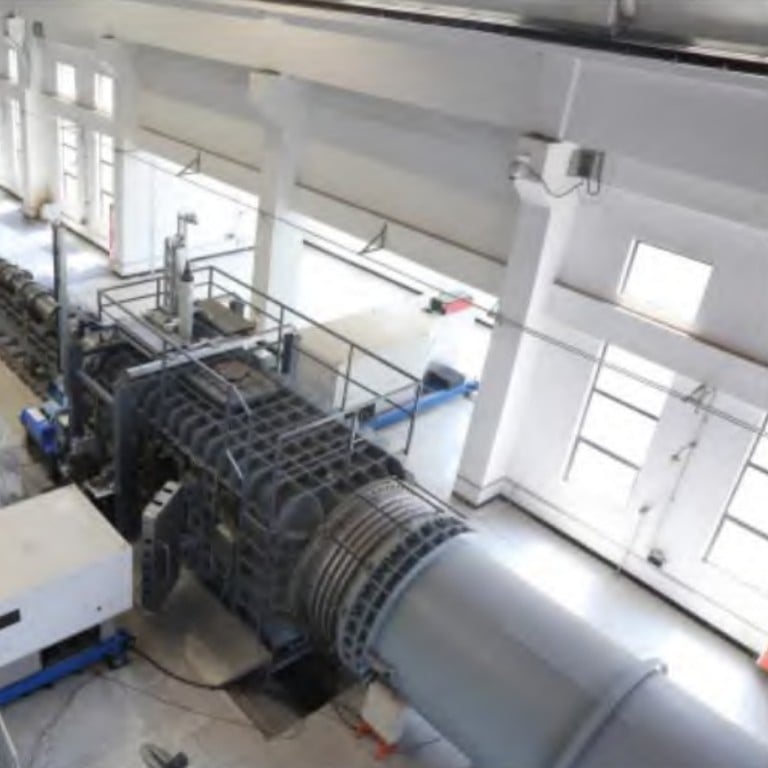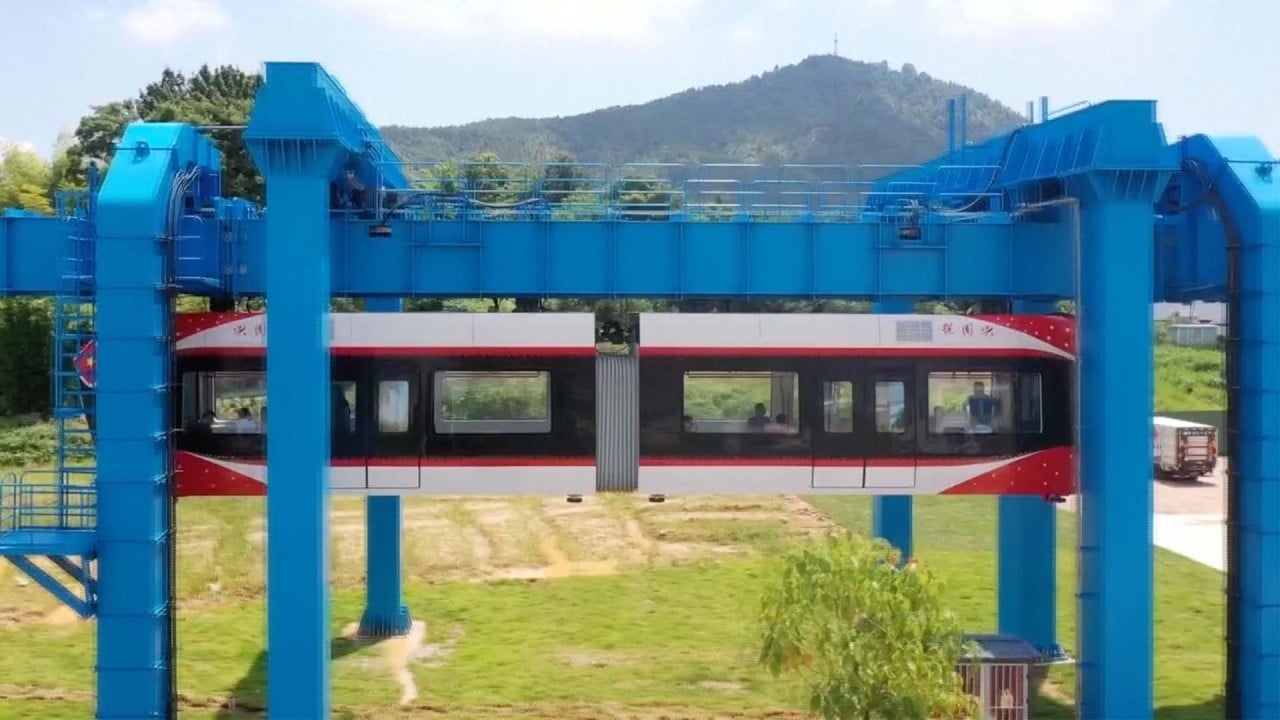
China’s record-breaking wind tunnel goes Mach 33 thanks to Australian invention
- The world’s largest free-piston driven shock tunnel will allow China to conduct hypersonic experiments and test its space innovations
- A free-piston driven tunnel is known as a Stalker tube, named after Australian space engineer Raymond Stalker who made an engineering breakthrough
The facility, based on a design proposed by Australian scientists, can simulate extreme flight conditions from 2.5 to 11.5 kilometres per second (1.55-7.14 miles per second) – or more than 33 times the speed of sound.
With a diameter of 80cm (2.6 feet), the testing tube was nearly twice the size of similar facilities in the West, they said.
“(We) have built the world’s largest free-piston driven expansion tube wind tunnel with high enthalpy,” said the project team led by Lyu Zhiguo, of the Hypervelocity Aerodynamics Institute under the China Aerodynamics Research and Development Centre in Mianyang. Enthalpy is a measurement of heat intensity in the air.
The paper was published in the domestic peer-reviewed journal Acta Aeronautica et Astronautica Sinica on September 1.
“It can be used for national-level engineering projects, such as the return capsule of the lunar landing project, entry into an alien atmosphere with an interstellar exploration aircraft and the development of hypersonic vehicles, such as scramjet-powered aircraft, by providing ground test support to simulate the environment at the ‘second cosmic speed’,” they added, referring to the so-called escape velocity from the Earth’s gravitational field.
A free-piston driven tunnel is known as a Stalker tube because it was invented by Australian space engineer Raymond Stalker in the 1960s.
China’s secret wind tunnel ‘key to hypersonic missile programme’
During the Cold War, the United States and Soviet Union built many large wind tunnels to study flight at hypervelocity, or speeds higher than Mach 5. These wind tunnels usually use hot hydrogen gas to recreate extreme flight conditions. But hydrogen is expensive, difficult to store and highly explosive, making their construction, operation and maintenance costly and difficult.
Stalker proposed a brand new design using high-pressure nitrogen – a cheap inert gas that makes up 80 per cent of the atmosphere – to drive a piston. The heavy piston, when accelerated to a speed of several hundred kilometres per hour, can compress air and burst through several layers of strong membranes to create extremely fast, hot shock waves similar to those experienced by an aircraft at hypersonic speeds.
The piston-driven wind tunnels built by Stalker and his colleagues in the 1980s have enabled Australia, a small player in the space race, to develop cutting-edge hypersonic flight technology, such as the scramjet, with limited investment and manpower.
The Stalker tubes are so successful the US signed an agreement with Australia in 2020 to jointly develop a Mach 8 hypersonic glide vehicle to counter rapid progress being made in China and Russia.
Many piston-driven wind tunnels have been built around the world over the last few decades, but the X3 Expansion Tube at the University of Queensland was, until recently, the biggest with a diameter of about 40 centimetres.
The new Chinese facility is more than just an expanded copy of the Australian tunnel, according to Lyu’s team.
The X3 tunnel connected to a high-pressure nitrogen tank that vibrates with the tube as the piston moves, potentially reducing the accuracy of ground test results, they said.
The Chinese team said it had solved the problem by wrapping the nitrogen storage component over the piston launching tube. This new design not only reduced the size and complexity of the entire facility, but also cut the vibrations to a fraction of those of standard Stalker tubes, according to their study.
Another challenge is the 840kg (1,852lb) piston which is heavier than any other used in a wind tunnel. The piston will speed up to 540km/h and has to endure crushing pressure from the compressed air equivalent to 10,000 times the force of gravity.
Lyu’s team said that thanks to a unique structure design and the use of new materials, the piston survived without a scratch in many intense, repeated tests.
This “full reusability” of the piston would significantly reduce the operating cost of the wind tunnel, they said.
The Chinese researchers also implemented other innovations, such as mounting the tube on a rail to help absorb the recoil caused by the piston launch, according to their paper.
But all Stalker tubes have a major problem. The simulation they produce lasts only about a thousandth of a second – too brief for some experiments, such as the chemical reactions of air molecules in high temperature, and testing a magnetic fluid power generator that can collect heat from the surface of an aircraft and turn it into electricity.
Russia arrests head of hypersonic missile lab for treason
Lyu’s team said the new facility would work with other types of wind tunnels to provide more comprehensive scientific data for China’s hypersonic programme.



